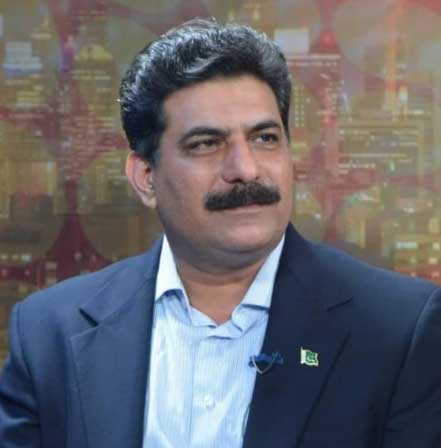Pakistan and Iran have gone through different stages of a relationship; brotherhood to friends and now mere acquaintances. Recent developments in the region demand this equation to be reversed. Changing geopolitical calculus particularly in our region has provided an opportunity for foreign policy enactors of our state to formulate a policy that comfortably placed us in a position to take politico-economic benefits of the emerging trends.
Iran was the first state to recognize Pakistan’s sovereign status after its independence. Further, it has also supported Pakistan in the 1965 and 1971 wars. The relationship started to deteriorate during the Zia era when the Iranian revolution took place in 1979 while Pakistan was transforming towards Islamization by the promotion of jihad as a proxy tool of the Kingdom of Saudi Arabia (KSA) and the United States of America (USA) to fight against Soviets in Afghanistan. Last year, even hot words have come from Iranian officials which was the lowest point in the history of relations between the two States.
An impression is prevailing in national and international policy circles that Pakistan has lost its geopolitical equilibrium since premier Imran Khan has taken the office. The first and foremost task after taking office for PTI was to take the country out of crisis due to the sword of heavy debt which is still lingering on the economy of Pakistan. PM Imran Khan first visited KSA then UAE, China, and Malaysia for managing the balance of payment crisis. KSA announced three billion dollars as a direct transfer to State Bank of Pakistan and three billion dollars as deferred payment. UAE also transferred three billion dollars. Others also acted the same way but these all efforts turned out not enough to avoid the IMF bailout package.
Preceding year the visit of King Suleiman with a thousand-person mainly; investors, business-persons, and officials have raised many concerns. The red carpet protocol by Imran Khan to Saudi representative soon after the February 13 attack was taken as a threat by our south-western neighbour. Because of all that the late Major-General Soleimeni warned Pakistan after one week of attack by putting Pakistan on notice, ‘Are you, who have atomic bombs and still not able to curb hundreds which are behind terrorist attacks in the region.’ He added; ‘not to test Iran’s patience as whoever tested Iran receives a firm response. We are telling not to allow your borders as insecurity to your neighbours’. During visits by the Foreign Minister and the Prime Minister of Pakistan, the leadership pacified the tense environment and better managed the conundrum through vows to boost counter-terrorism cooperation with Iran.
CPEC has contributed to maintaining the equilibrium for Pakistan by contributing through the making of Pakistan’s part in the Iran-Pakistan (IP) pipeline. Whilst the Saudi Crown Prince has announced ten billion dollars oil refinery and petrochemical complex which has become a cause of caution for Iran and China. Former fears that it will nullify the benefits of the IP pipeline. Latter is concerned about the potential of proxy warfare at the bottleneck of CPEC in the coastal region. Inhabitants of Gwadar see the Saudi investment in an oil refinery in the context of rivalry between two middle-eastern powers. Fear is spreading that it will bring in US influence due to the common strategic objectives of the Saudis and Americans against Iran.
Looking forward, Pakistan ought to engage its allies and neighbours by developing a geo-economics framework. Pakistan must make sure that Saudi investment is coming with no geostrategic strings attached, and that it would be for economic purposes only under the compulsion of the Saudi Vision 2030. Pakistan also ensures that no proxy group will operate from its soil against its neighbours and upheld the claim as portrayed in its foreign policy objectives. In spite of the fact that it would be difficult to maintain such a relationship with an assertive Saudi regime, Pakistan ought to maintain a balance through a China-Pakistan-Iran economic partnership.
Iran and China have a trading volume of around US $50 billion per year and agreed to increase bilateral trade and expand multidimensional ties tenfold in the following decade. Currently, the 25-year strategic deal between our northern and southwestern neighbours is the climax of their relationship and expected to be worth more than a hundred billion dollars covering both military and economic aspects.
The volume of trade between Pakistan and Iran is the US $392.08 million per annum which is much lower than potential. Deft diplomacy is need of an hour for Pakistan to take benefit of regional developments economically and politically. In addition, it will also help its neighbours to maintain regional integration. Pakistan needs to avail the opportunity as its strategic future, in the long run, lies with China.
With 10 percent proven oil reserves of the world, Iran has a serious interest to extend its energy reserves through pipelines in the region. It has completed a 900-kilometer segment of the Pakistan-Iran gas pipeline in its portion. Through CPEC, China will lay down the 80 km gas pipeline from Gwadar Port to the Nawabshah which will be instrumental in helping Iran extend its pipeline in Pakistan and further extend it to China and in the region. Iran’s desire for close economic and security relations with China cannot become a reality without active participation in CPEC.
It ought to see Chabahar and Gwadar as complementary to each other rather than a competition. As the border between Pakistan and Iran has been named ‘border of Peace, Friendship and Love’, both countries must work in true spirits to pragmatically maintain that claim. Resultantly, this will create a win-win for Iran, Pakistan, and China.
Sign in
Welcome! Log into your account
Forgot your password? Get help
Password recovery
Recover your password
A password will be e-mailed to you.




